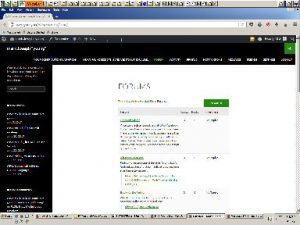This is mark Joseph “young” blog entry #202, on the subject of Verser Confrontations.
With permission of Valdron Inc I have begun publishing my third novel, For Better or Verse, in serialized form on the web (that link will take you to the table of contents). If you missed the first two, you can find the table of contents for the first at Verse Three, Chapter One: The First Multiverser Novel, and that for the second at Old Verses New. There was also a series of web log posts looking at the writing process, the decisions and choices that delivered the final product; those posts are indexed along with the chapters in the tables of contents pages. Now as the third is posted I am again offering a set of “behind the writings” insights. This “behind the writings” look definitely contains spoilers because it sometimes talks about what I was planning to do later in the book–although it sometimes raises ideas that were never pursued. You might want to read the referenced chapters before reading this look at them. Links below (the section headings) will take you to the specific individual chapters being discussed, and there are (or will soon be) links on those pages to bring you back hopefully to the same point here.
There is also a section of the site, Multiverser Novel Support Pages, in which I have begun to place materials related to the novels beginning with character papers for the major characters, hopefully giving them at different stages as they move through the books.
These were the previous mark Joseph “young” web log posts covering this book:
- #157: Versers Restart (which provided this kind of insight into the first eleven chapters);
- #164: Versers Proceed (which covered chapters 12 through 22);
- #170: Versers Explore (which covered chapters 23 through 33);
- #174: Versers Achieve (chapters 34 through 44);
- #180: Versers Focus (chapters 45 through 55);
- #183: Verser Transitions (chapters 56 through 66);
- #186: Worlds Change (chapters 67 through 77);
- #191: Versers Travel (chapters 78 through 88);
- #198: Verser Trials (89 through 99).
This picks up from there, with chapters 100 through 110.
History of the series, including the reason it started, the origins of character names and details, and many of the ideas, are in those earlier posts, and won’t be repeated here.
Quick links to discussions in this page:
Chapter 100, Hastings 126
Chapter 101, Slade 82
Chapter 102, Brown 86
Chapter 103, Hastings 127
Chapter 104, Slade 83
Chapter 105, Brown 87
Chapter 106, Hastings 128
Chapter 107, Slade 84
Chapter 108, Brown 88
Chapter 109, Hastings 129
Chapter 110, Slade 85
As I was dealing with the wolves, I wondered why they should trust Lauren or care about humanity. I realized I’d already given myself a reason: Bethany had saved the forest for them, working with the people of Wandborough. It also occurred to me that Lauren has always called on the wolves for aid, but they have never called on her. It seemed reasonable to suggest that pack mother Sielle would have some problem for which Lauren was the answer. I don’t know what it is, yet, but it gives me something for Lauren to do besides repeated commando raids on vampire government officials.
When I was playing the games that became the basis for the Philadelphia stories, the wolves did come to me for help a few times; that was a much longer story, though, than I could include in the books. (Much of this is preserved in the older Stories from the Verse site as Journals of the Architect.)
Most of this I realized as it was unfolding–the slack and taut ropes, for instance. I decided on the use of the sheepshank in the midst of writing, as well. I was thinking before I started the passage that Slade didn’t know how to find the door, and the Norns idea was getting tired, but I could have them guide him by pointing him to Shella. I remembered that Shella had been watching, and thought perhaps I could come up with some plausible reason why she knew the way when he didn’t. However, it wasn’t until just before I wrote it that I realized that the tower was there. Slade’s embarrassment was thus a reflection of my own on that count.
I discovered a numbering glitch when I was writing this; I’d numbered two consecutive Brown sections 76. I corrected it; I hope I got it all.
I awoke with the idea of the dream, and let it simmer while I took care of some other things. I had a lot to do today, but did not want to lose this idea. One fragment of it, the idea that marrying might be a cause of grief, I probably got from my morning reading of Jeremiah.
I also began envisioning a bit of a battle between Derek and the king’s guards in the human city. His aerobatics practice and his training with Lauren would finally combine into something unique to him. I’ll have to figure out how to preserve it, but I think this could go somewhere.
I also wanted him to feel the pain of losing his family now, before he lost them. I decided he should say goodbye to his father, but not wake his mother, but simply kiss her.
Adam commented a day or so ago that everyone was getting married in this book. He didn’t know that Derek wasn’t going to reach the altar (something of which I was myself only about ninety percent certain then, and still only ninety-eight percent certain now). Yet I did observe for him that Lauren wasn’t headed that direction. He said he knew why this was: it was because she was already married. Yes, that was correct, I observed, thinking back to her tension on that in the end of the second novel. Yet at that moment I saw something I could do with Lauren’s story that would make it far better. I would bring Phil Hastings back as a vampire. She never did find out what had happened to him in this world, and he had married someone else. It was not an impossible stretch. I could do something with it, give Lauren more depth than merely killing a bunch of vampires, and stretch the story a bit to give the others time to catch up with her. In the midst of this, it was an echo of Bethany’s confrontation with her mother centuries before. This time it would be Bethany who told Lauren that she could not believe it was human, and that she had to recognize it for what it was and kill it. I thus started looking for a way to carry it in that direction. As I write this, it seems to me that I should connect Phil Hastings with the Philadelphia area leadership somehow; I’m not yet certain how, but it would explain why Lauren arrived in Philadelphia instead of Wandborough.
The name thing was not an entirely new idea; after all, Gavin had changed his name, and that had been mentioned. I needed a way to prevent Lauren from realizing that she was about to confront the man who was this world’s equivalent of her husband, and the name was the way to do it. The Liberty Bell/Independence Hall idea had merit, in that having it closed and slated for demolition would provide some echo of the idea that the vampire domination was a bad thing. I thought also that The Arena might recall Rome to some readers, although I didn’t want to push it. I created the route on the fly (I’m not completely certain where Independence Hall is relative to the waterfront, but figured it wasn’t that close, and the sports arena is near the airport, which is the south side of the city, so things are pretty well arranged).
I also decided she needed to fight her way through. These were no longer going to be simple run-in-and-kill-the-vampire raids. It had to look more difficult. I also needed to help people understand why she just doesn’t blow everyone away with the disintegrator rod.
I recalled the “old times” line that had really been something of a throwaway in the first book which had echoed in the second when they were in Camelot. Now to have Bethany say it again more soberly I thought would have some impact.
I remembered that there was a bar on the inside of the door, and I had to provide a way to get past it. I also remembered the D&D Viking Handbook had said something about Viking thieves not knowing anything about mechanical locks, but understanding how to jimmy barred doors, so I figured there was a way to do it. It seemed a simple enough approach to use the metal strip, so that’s where I went.
Most of this I felt my way through–the difference between mentally visiting a place and being there, between traveling the streets and flying above them, and the telekinetic lock picking were all things I created during the day I wrote this, although I wrote part in the morning and part in the afternoon, and so had time between to think through the end of the chapter.
Part of the idea was for Lauren to face the same tension Bethany had faced, to have to kill a vampire that looked like someone she loved. I also had it in mind that this might free her from her concerns about being married to Phil, although I don’t yet know how that will work. It only now occurs to me that this fits well with the marriage thread of the book, as well as leading to the climax of the vampire thread and the Merlin connection.
I’d given some thought to a quick fight scene for Slade, in which a guard came through the door and he stabbed the man through the throat and tossed him off the wall; but it seemed too violent for this moment in the story, in which a quiet takeover seemed the order of the hour. I glossed over how many men were on the wall and how they were silenced, for much the same reason.
I considered whether Odette’s dagger should find a target, and decided against it. I had not yet decided how to verse them out of this world, but I was eager to see a scene in which Acquivar disclaimed any interest in saving Odette.
I’d played out this scene in my mind a few times; still, there were elements that I devised as I wrote. The guard on the door and the food cart were both created at that moment. I had envisioned the confusion in the room, several people being brought down by arrows, and the use of telepathy to reach the ruler (whose title I never did decide). The idea that people did not know sprites could talk seemed reasonable, particularly since elves didn’t even know they existed. To expand that to suggest that humans didn’t know elves or gnomes existed also seemed reasonable. The simple rule to establish peace seemed an acceptable solution to the problem, and let me move forward. I’d imagined some agreement being reached, and then someone very like a gardener or maintenance man bursting in and “dealing with the problem” over the objections of the ruler. It seemed to work well enough.
As I prepared to write this, a number of ideas connected. One was that Lauren and Bethany would pray for someone to come; Derek was already on his way, but they couldn’t know that, and it would be a valuable story point.
Another was the idea that Lauren, as powerful as she is, finds her real strength in building teams, of bringing people together who compliment each other. It is perhaps a theme in Lauren’s story that she almost always works with others, that she forms teams that work well. In Philadelphia, she brought the human hunters together with the werewolves against the vampires; in the parakeet valley she worked with Joe and Bob to rescue Speckles; in Camelot a good part of her reported adventures involved questing with Sir Sagrimore, and in the end she brought the villagers together with the werewolves against the vampires. In the futuristic post-apocalyptic world she turned an adventuring party into a university faculty that continued after she had gone. In Wandborough she worked with Bethany against the vampires, and then in Terranova Habitat she teamed with Derek and Joe. She was alone on the tropical island, but her task there was to practice and learn, and now that she is back in the vampire future world she is building a new team.
I had long been thinking that Derek was going to develop the ability to change between his three forms–the sprite, the human, and the mid-sized something. As I thought about the turns ahead, I realized I could make this work much more convincingly by having Bethany use her magic to give Derek this ability. It would also bring him to Lauren more quickly.
A lot of this chapter was written to provide the space I needed to bring in the prayer.
The idea of Odette confessing from the battlements had been in my mind for quite a while. What I hadn’t worked out in advance was the movement of armies to get to this position. I glossed some of that, but I think it was credible.
At this point I had again lost my chance to kill Slade and send him to the next world; but with Derek on the way, I wasn’t ready for him anyway. I was envisioning Slade and Shella appearing in the midst of some battle, recognizing Lauren in trouble, and coming to her aid, and that wasn’t going to happen until I managed to handle the arrival of Derek.
The idea that formed in my head at this point was that Slade was going to fight some fire elemental, an efriit of some sort. It should be a major battle, taking at least a chapter, maybe two. I haven’t figured out how to set it up yet, though.
This has been the tenth behind the writings look at For Better or Verse. Assuming that there is interest, I will continue preparing and posting them every eleven chapters, that is, every three weeks.
[contact-form][contact-field label=”Name” type=”name” required=”true” /][contact-field label=”Email” type=”email” required=”true” /][contact-field label=”Website” type=”url” /][contact-field label=”Comment: Note that this form will contact the author by e-mail; to post comments to the article, see below; or visit the site forums.” type=”textarea” /][/contact-form]









